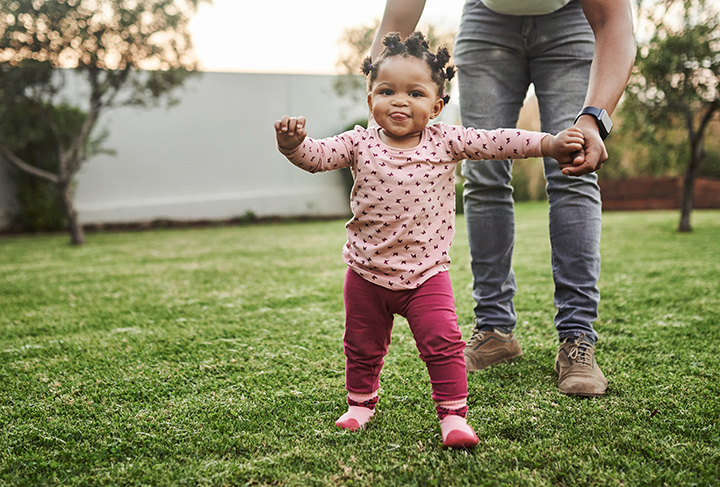
10-Month-Old Baby Development
- Home
- Services
- Conditions
- Children's Primary Care
- 10-Month-Old Baby Development
What to Expect at 10 Months
Babies at 10 months are full of personality and are learning how to use their voices and faces to impress and delight the people around them. They have likely gained good control of their arms and hands and can grasp and pull objects in order to manipulate them.
Baby Behavior at 10 Months
Around this time, we begin to see some interesting baby behaviors that can both amuse and worry parents. These include intentional coughing, squealing, grunting, growling, and singing, as well as a host of other movements.
The cough is perhaps the most worrisome to parents. In this scenario, the baby gives an intentional “cough, cough, cough” then looks to see your face. They might smile or laugh afterward. The cough is not tied to an illness, such as fever or runny nose, and does not happen when the baby is asleep. It does not cause distress or a skin color change and the baby seems to control it. In this case, it’s just a representation of the child learning to control his or her voice. Grunting, growling, squealing, and singing are all similar behaviors.
Breath-holding spells can also begin at this age. In a breath-holding spell, an infant, who is usually upset in the moment, will intentionally hold his or her breath until he or she becomes bright red. Breath-holding spells can happen when a baby is angry, scared, startled, or otherwise bothered. In rare instances, babies will hold their breath so long they actually faint. Breath holding is common and voluntary, but if it leads to fainting it’s best to discuss with your pediatrician. When associated with anger or frustration, breath holding is one form of a temper tantrum. Staying calm, keeping your baby safe, and offering a reassuring but consistent message can help discourage breath holding during tantrums.
Hair- or ear-pulling can be seen as well in a 10-month-old baby. Babies will reach up, grab a handful of hair and pull, often quite hard. This is often seen as a sign of fatigue, similar to ear tugging and rubbing of eyes. If you suspect this is the case, look closely at the bed and naptime routine — you may need to begin a bit earlier.
Similarly, some babies will rock or head-bang. They may do so out of frustration or just as part of a self-soothing ritual. The rhythmic motion can be very soothing to a child when teething, settling down for sleep, or feeling upset. Offering them a safe space to move prevents injury and gives you piece of mind. Not overreacting ensures that the infant does not learn to bang their head as a way to gain attention. Most children outgrow the behavior in the preschool years.
Parents are often concerned that the rhythmic motions above — head-banging, rocking, and the like — are signs of autism. While children with autism may also do some of these behaviors, they alone do not indicate autism.
